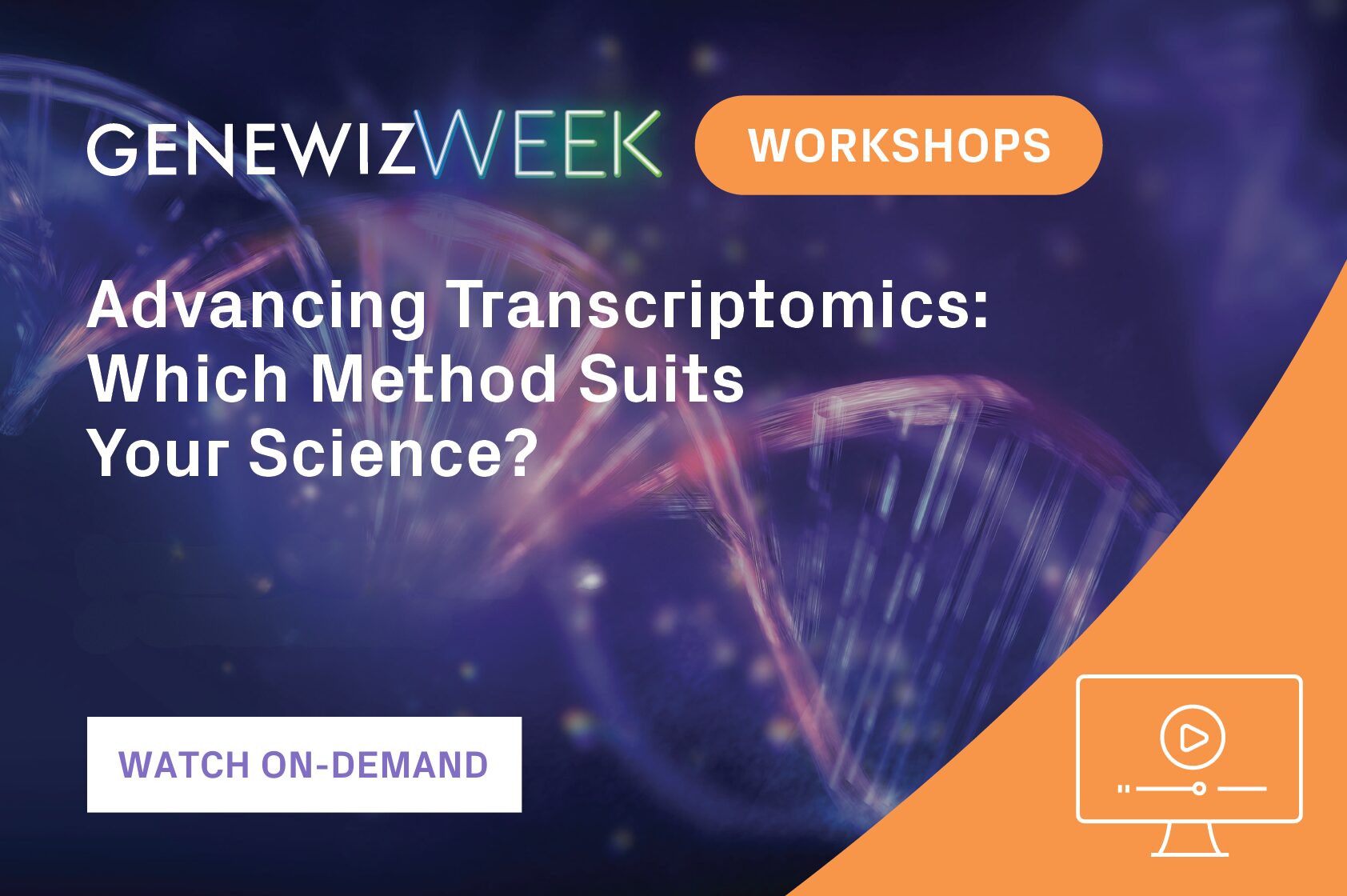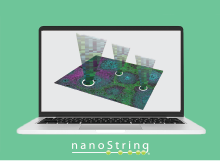Spatial Transcriptomics
Spatial transcriptomics combines high-plex quantification with the spatial resolution of immunohistochemistry. This technology classifies tissue based on total mRNA or protein within the morphological context of FFPE or frozen tissues. Spatial expression mapping is a powerful tool for examining cellular interactions, tissue and tumor heterogeneity, pathogenicity, and response to therapy.
We offer spatial profiling at multiple levels of resolution utilizing 10X Genomics® Visium HD® and NanoString® GeoMx® Digital Spatial Profiler platforms. These novel technologies perform simultaneous, in situ spatial analysis from a single FFPE or frozen tissue section. You can select from a host of discovery-focused panels with the potential for customization. Together with our epigenetic and single-cell sequencing solutions, you have access to the most cutting-edge technologies available to study gene expression from every angle and every level.
Why is spatial profiling important?
Digital special profiling (DSP) is important for analyzing cellular heterogeneity and intracellular interactions, especially in the context of drug therapy response. Important advantages of DSP:
- Samples can be stored and probed again
- Multiple regions of interest (ROI) can be explored from a single FFPE slide
- DSP offers the benefits of both IHC/FISH and high-throughput expression analysis
What is digital spatial profiling?
Digital spatial profiling (DSP) is a technique used to identify and quantify mRNA and protein expression in tissues such as FFPE (formalin-fixed paraffin-embedded) samples, fresh frozen tissue sections, tissue microarrays, and core needle biopsies.
Morphologically-Guided Spatial Profiling Using Cutting Edge Technologies
Visium HD
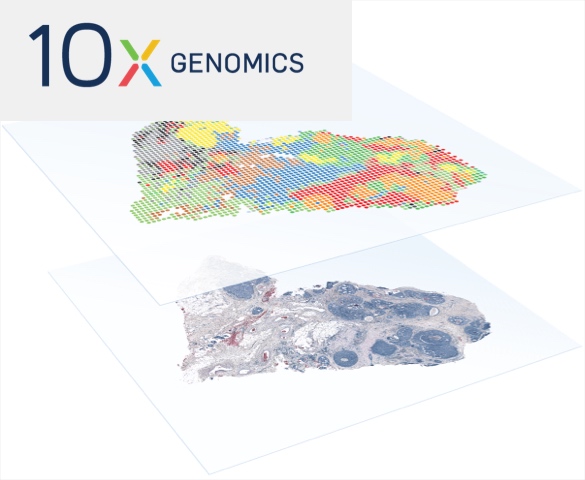
10x Genomics Certified Service Provider and one of three exclusive 10x Global Clinical Research Organizations (CROs)
High-resolution full mapping of the transcriptome across tissue sections while preserving spatial context
- Minimal workflow optimization needed
- No need to select regions of interest (ROI)
- Integrates histological imaging with gene expression data to provide tissue architecture and cellular organization insights
- Compatible with FFPE and fresh-frozen samples, with the ability to process archival H&E-stained pathology slides
- Ideal for studying heterogeneity, developmental biology, disease progression, and cellular interactions within single-cell resolution and at scale
GeoMx
High-plex profiling of RNA and protein expressions within multiple regions of interest in tissue samples
- Reduces sequencing depth costs
- Measures multiple regions of interest (ROIs) in a single slide
- Capacity to detect and measure protein expression
- Combines quantitative imaging with spatially targeted analysis for precise data on specific tissue microenvironments, immune responses, and tumor biology
- Compatible with FFPE and fresh-frozen samples
- Ideal for studying specific regions of interest for cancer, immunology, and neuroscience
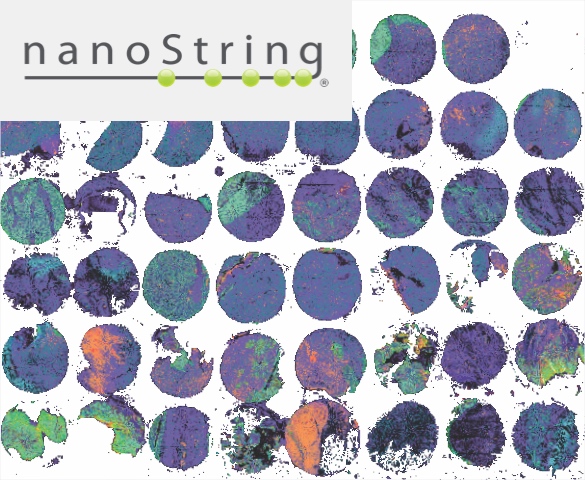
Applications of Spatial Transcriptomic Technology
Oncology
- Profile tumor heterogeneity, microenvironment, and cancer stem cells
- Identify tumor-infiltrating lymphocytes (TILs)
Immunology
- In situ immune repertoire characterization
- Immune response profiling of normal and diseased states
Neuroscience
- Contextually profile neural and stem cells
- Characterization of neurodegenerative disease pathology
Pathology
- High-plex analysis of expression in normal and diseased tissues
- Biomarker discovery and characterization
- Monitor therapy response
Embryo Development
- Characterize spatial gene expression during embryogenesis
- Associate gene expression with pluripotency and cellular differentiation
Technical Resources
Webinar | Morphology Driven High-Plex Spatial Analysis of Tissue Microenvironments
In this webinar presented by Douglas Hinerfeld, Ph.D., Director of Product Applications at NanoString, learn how their novel GeoMx platform simultaneously analyzes dozens of proteins and transcripts with high spatial resolution, providing greater insight into biological systems and diseases across a variety of research areas.
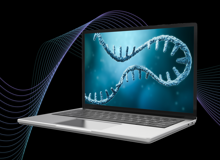
Webinar Series | Advancing Transcriptomics: Gene Expression Screening, Single-Cell RNA-Seq, and Beyond
With this two-part webinar series, go beyond traditional transcriptomics and learn about the various NGS approaches available for gene expression analysis. In part 1, we take an in-depth look at various gene expression approaches, including RNA-Seq, single-cell RNA-Seq, digital spatial profiling, and more. In part 2, we explore the data generated from these approaches and how they can complement each other and confirm findings.

Webinar | Application of Spatial Genomics for High-Throughput and High-Plex Transcriptional and Proteomic Profiling
In this webinar first presented at Oxford Global’s Spatial Biology US: Online conference, learn about the power of spatial genomics as presenter David Corney, Ph.D. presents the use of digital spatial profiling in performing high-plex protein profiling of gastric cancer and high-throughput RNA spatial profiling of urothelial carcinoma utilizing the NanoString® GeoMx™ Digital Spatial Profiler.
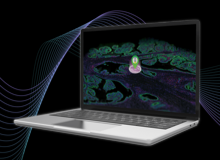
Webinar | New Frontiers in Sub-Cellular Spatial Biology
In this webinar, learn how spatial biology technology enables discovery of unique findings as Dr. Andres Matoso from Johns Hopkins University discusses his research in sarcomatoid urothelial carcinoma and his unique findings utilizing Azenta’s digital spatial profiling (DSP) services.
NGS PLATFORMS
For information on our NGS platforms as well as recommended configurations of your projects, please visit the NGS Platforms page. Azenta does not guarantee data output or quality for sequencing-only projects.

